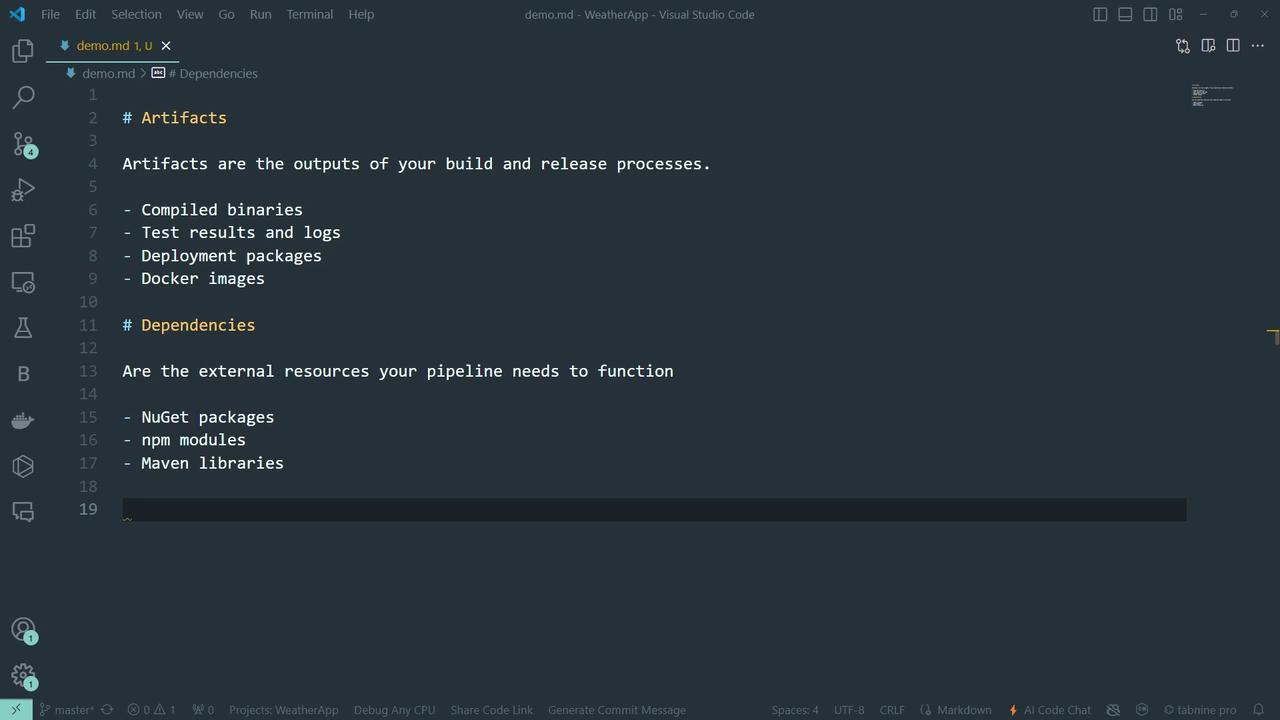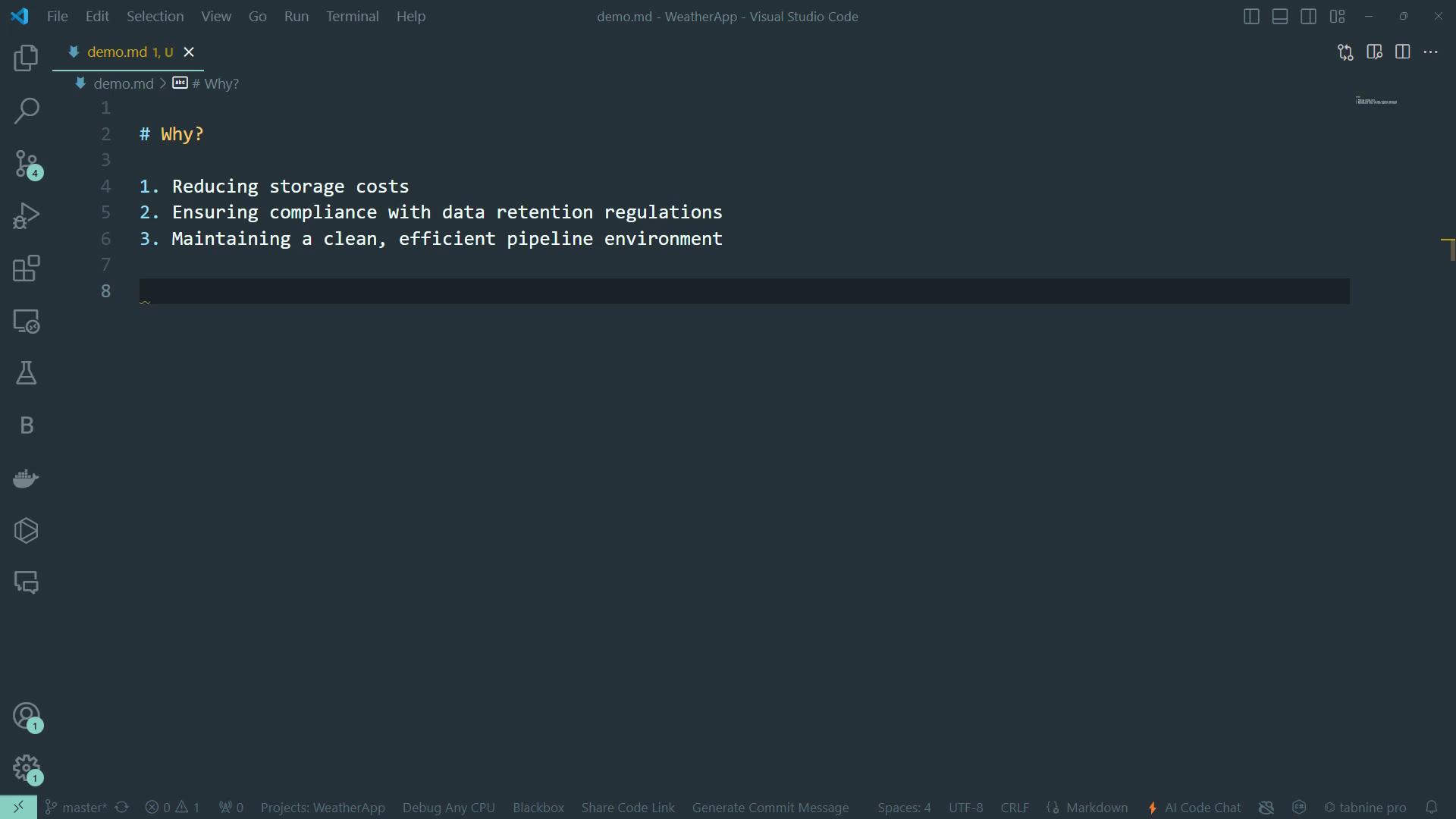AZ-400: Designing and Implementing Microsoft DevOps Solutions
Maintain Pipelines
Design and implement a retention strategy for pipeline artifacts and dependencies
In this guide, you’ll learn how to set up and manage retention policies in Azure Pipelines. Proper artifact and dependency retention reduces storage costs, ensures regulatory compliance, and keeps your CI/CD workflows running smoothly.
Artifacts vs. Dependencies
Artifacts
Outputs generated by your build and release processes—binaries, Docker images, test results, logs, deployment packages, and more.
Dependencies
External libraries and packages required at build time—NuGet, npm modules, Maven dependencies, etc.
Think of dependencies as ingredients and artifacts as the final dishes.

Why Retention Matters
Retention policies in Azure DevOps automatically purge old runs, artifacts, and attachments based on configurable rules. Key benefits include:
- Lower cloud storage costs
- Compliance with data retention regulations
- Cleaner, more efficient pipeline environments
Note
You can scope retention settings to specific branches, tags, or pipeline triggers.

Configure Retention in the Azure DevOps UI
- Go to your Azure DevOps project.
- Select Project settings > Pipelines > Settings.
- Under Retention, adjust:
- Days to keep runs
- Pull request runs
- Number of recent runs
Warning
If Days to keep runs is shorter than any artifact-level setting, the pipeline-level setting takes precedence.
Define Retention in Your Pipeline YAML
Embed retention rules directly in YAML for repeatable CI configurations:
trigger:
branches: [ main ]
pool:
vmImage: ubuntu-latest
variables:
retentionDays: 30
jobs:
- job: Build
displayName: Build and Publish Artifact
steps:
- script: echo "Compiling source code..."
displayName: Compile Code
- task: PublishBuildArtifacts@1
inputs:
pathToPublish: '$(Build.ArtifactStagingDirectory)'
artifactName: 'drop'
- job: Cleanup
displayName: Clean Up and Create Retention Lease
dependsOn: Build
pool: server
steps:
- task: DeleteFiles@1
inputs:
SourceFolder: '$(Build.SourcesDirectory)'
Contents: '**/*.tmp'
displayName: Remove Temporary Files
- task: PowerShell@2
inputs:
targetType: 'inline'
script: |
$uri = "$(System.CollectionUri)$(System.TeamProject)/_apis/build/retention/leases?api-version=6.0"
$lease = @{
daysValid = $(retentionDays)
definitionId = $(System.DefinitionId)
runId = $(Build.BuildId)
ownerId = "User:$(Build.RequestedForId)"
} | ConvertTo-Json
Invoke-RestMethod -Uri $uri -Method Post -Body $lease `
-ContentType "application/json" `
-Headers @{ Authorization = "Bearer $(System.AccessToken)" }
displayName: Create Retention Lease
Other Retention Management Methods
| Method | Description | Example Command or Script |
|---|---|---|
| Azure DevOps UI | Centralized retention settings in Project Settings | N/A |
| PowerShell Scripts | Use the [Retention Leases API] | Invoke-RestMethod -Uri .../leases?api-version=6.0 |
| Azure CLI | Manage leases from the command line | az pipelines runs lease create --days 30 |
Best Practices for Balancing Retention and Cost
- Review and prune retention policies quarterly.
- Tag production releases for extended retention.
- Automate variable templates to standardize
retentionDays.
Tip
Centralize retention variables in a template to keep your pipelines DRY and maintainable.
Links and References
Watch Video
Watch video content